Terra Dei Homestead
The Terra Dei Homestead was designed to be an example of what people can do to conserve energy and resources. Conserving energy not only allows us to use less fossil fuels, it also reduces the amount of acid rain produced, decreases air pollution, and decreases water pollution. Many of the materials that went into the construction of the house were reused, and several products made of recycled materials are highlighted inside.
Programs at Terra Dei Homestead encourage students to consider the environmental implications of their lifestyles and explore every day solutions to ecological problems. Customized, hands-on programs may include alternative energy sources, energy efficiency, integrated pest management, and organic gardening. Many activities focus on the demonstration house at Terra Dei Homestead. It is the first straw bale house built in Pennsylvania and features a myriad of conservation technologies.
Tour of Terra Dei Homestead
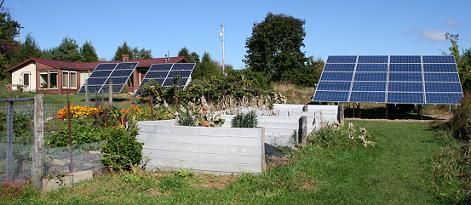
Welcome to the Virtual Tour of Terra Dei Homestead !
Here are some of the various features of Terra Dei Homestead, where you will learn about the variety of energy and resource-efficient means of living that we utilize here.
You will find that living a life of less impact can be quite comfortable!

This small room is designed so that the access door to the house can be closed when the front door is opened. This is especially helpful in the winter, because it prevents cold outside air from entering the main living area. This reduces the amount of heating needed to keep the house at a comfortable temperature. Many homes have an entryway, or mudroom, but do not have doors on both ends of the room. A heavy curtain or quilt can be used instead to block the flow of warm air out of the house.
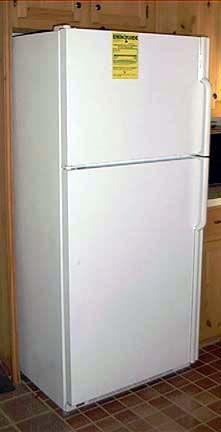
Many household appliances use large amounts of energy to perform their functions. At Terra Dei, appliances were chosen for their efficiency. The refrigerator keeps the food as fresh as any other fridge, but uses far less electricity. The Neptune washing machine gets clothes just as clean, but uses less than half of the water and electricity. Both of these appliances are made by Maytag, and were given the EnergyStar rating for efficiency.


Humans are a source of renewable energy. We can use our body's energy to make electricity. This exercise bike is connected to a generator (from a '74 Volkswagen Beetle). As the bike is pedaled, the generator is turned by a belt that is attached to the bike. Electricity flows into the battery and is stored there. Twenty minutes of pedaling runs the TV for two hours. Direct current from the battery is converted into alternating current by an inverter. We can use the battery power to turn on the TV, radio, or lights by plugging them into the inverter. The clips attach to the battery. Flip the switch and the power turns on.

Two sets of composting bins are in operation at the homestead. The narrower system is designed for processing food waste from Lutherlyn's dining hall into soil for the garden. The larger system is used for processing yard waste, horse manure, and bigger plant waste. Most of the soil used for landscaping and gardening at Terra Dei was produced through the composting process. The bin systems are designed with locust posts and plastic lumber to resist rot. While we built our own bins at Terra Dei, we also use a manufactured Compost Tumbler system to pre-compost the food waste from Lutherlyn's dining hall.
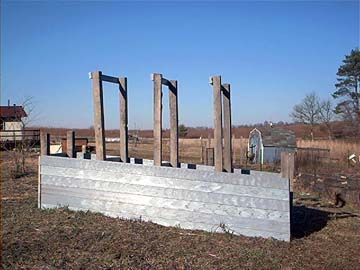
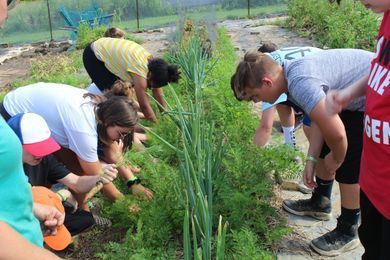
The organic garden at Terra Dei produces a variety of "heirloom" vegetables for the dining hall at Lutherlyn, and provides summer campers with learning opportunities. Raspberries, blueberries, strawberries, grapes, and kiwi are also being grown in different areas of the yard. Growing food around the house saves a lot of money and energy when compared to shopping at the supermarket, and cuts down on fuel use and production of pollution, too. It is called an "organic" garden, because no chemical pesticides, herbicides or fertilizers are used. Pest and weed control are done by hand, or by wild and domestic animals. Compost and manure are used for fertilizers, along with ash from the fireplace. Old rubber roofing material has been re-used for mulch.

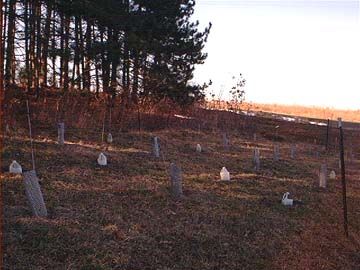
Around the garden, a number of orchard areas are planted, including walnut, chestnut, apple, cherry, pear, and mulberry trees. The chestnut grove is part of the American Chestnut Replacement Project. The American Chestnut tree was a vital resource during early United States history. Three out of every four trees in the hardwood forests of the eastern U.S. were chestnuts. Unfortunately, around 1900, someone unknowingly brought a fungus or " chestnut blight," into the United States. This fungus spread very rapidly and infected and killed almost every American Chestnut tree in existence. Fortunately, a small percentage of American Chestnut trees have a natural resistance to the blight. The seeds that have been planted in this nursery area were harvested from surviving American Chestnut trees.
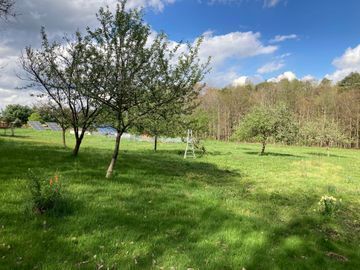
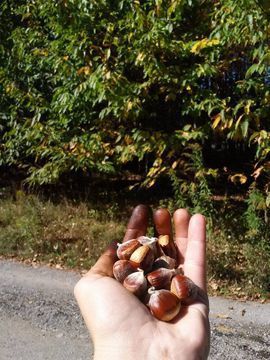
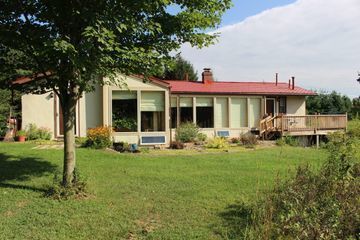
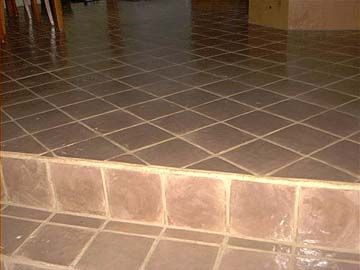
The tile on the floor is composed of recycled glass (73%) and was obtained from Stoneware Tile Co. The padding underneath the carpet is composed of recycled tire rubber (92%) and was donated by the Dura Undercushion Co. The carpet itself is composed of 100% recycled plastic from soda bottles and is manufactured by Shaw Carpet. Carpet like this is very durable and holds its color longer than most carpets. It is also stain resistant and easy to clean.
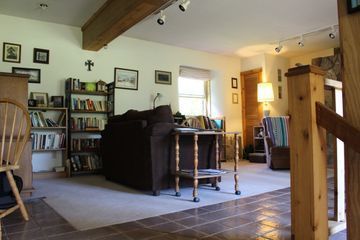
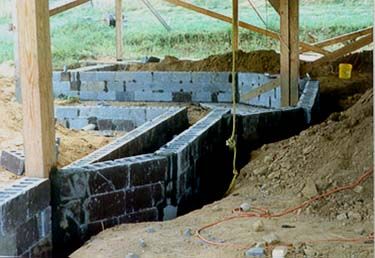
Footings are used to support the floor in the house. The cement blocks from old cabins were reused in the footers.
A special technique known as a "shallow foundation skirt" was used to insulate the footings and conserve resources. This involved placing polystyrene insulation boards vertically along the footer and horizontally, projecting out from its base.
This technique will prevent the cold from getting underneath the footing and freezing the ground under the house. Conventional homes have foundations that go below the frost line, this technique allows us to use fewer materials and accomplish the same result.
The material used in our construction was donated by Amoco Corporation and is made of 50% recycled polystyrene foam.
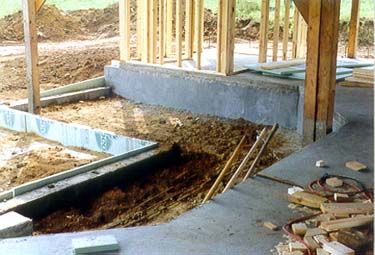
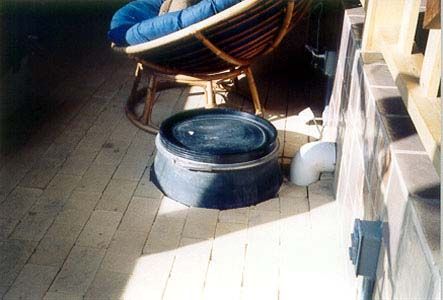
Lutherlyn obtained a special experimental permit for this system from the Pennsylvania Department of Environmental Protection. The water that goes down the drain in the sinks, shower, and washing machine flows through a filter and into the tank in the floor of the sunspace. A pump inside the tank sends the water to the planter. Pipes in the planter distribute the water equally and the plants use the water to grow. Whatever water is not used by the plants trickles down through the soil and the organisms that live in the soil can eat any impurities in the water. The water may finally reach a drain in the bottom of the planter, which will take it to the leachfield above the garden. Here the water is used once again to grow wildflowers and then trickles down through the soil until it reaches the ground water table.

In this way the water is used three times and returns to the ground water table purified. Using a planter like this one requires special soaps, shampoos, and detergents to be used. They must be biodegradable and contain very few salts. Using such items helps to reduce water pollution, even if you don't have a grey water planter.

The lights in the kitchen and dining room illustrate the difference between incandescent and compact fluorescent light (CFL) bulbs. The incandescent bulb uses 60 watts of electricity, while the compact fluorescent uses only 25% as much electricity to create more light. Over the life of the bulb, the energy savings can add up to about $55 in your pocket. Another advantage is that the CFL bulb will last 14 times longer than a regular light bulb. Compact fluorescent bulbs are now available in many shapes and sizes, like the mini-bulbs used in the door lamps.

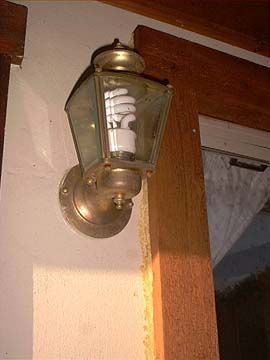

This is an "instant" hot water heater. It only heats the water when the hot water faucet is turned on. Flames heat the pipes as the water flows through on its way to the faucet. This saves a lot of energy when compared to a conventional hot water tank that has to keep many gallons of water hot all the time.
This particular water heater can also be attached to a solar hot water system. This could allow us to preheat the water by using the sun, and adding any additional heating that may be required with this device.

The masonry stove is a fireplace like those used in northern Europe, and burns firewood very efficiently. A fire is built in the firebox and the smoke and heat enter a secondary combustion chamber where the gases burn at temperatures of more than 1500 degrees Fahrenheit.

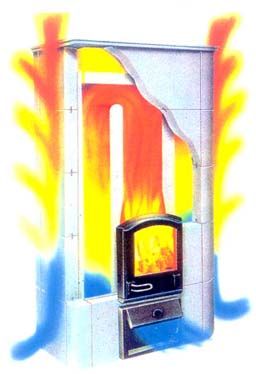
The heat rises to the top of the stove and is then forced down along the sides through channels made of brick. This allows the bricks inside to absorb the heat. The remaining gases (mostly water vapor and carbon dioxide) exit along the base of the stove to the chimney. The heat of the bricks is slowly radiated out through the stone face of the stove. This allows the house to be heated for up to 12 hours with a fire that only lasted about one hour. Wood is a renewable biomass energy source, and a masonry heater helps to overcome to pollution disadvantages associated with burning biomass fuels.
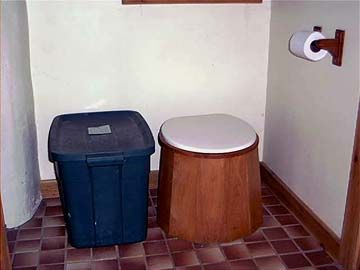
Approximately one-third of the clean water that American households use is flushed down the toilet. The composting toilet at Terra Dei uses no water; it uses biological decay instead.
Waste going into the toilet reaches a tank below the floor where microscopic organisms break it down and convert it to soil. Wood shavings are added after each use to provide aeration spaces. A fan is connected to the tank and makes sure that oxygen is always present, thus eliminating any odor. In three to four years, this compost can be used to fertilize flowers and trees. Finished compost is removed through a door at the bottom of the tank.
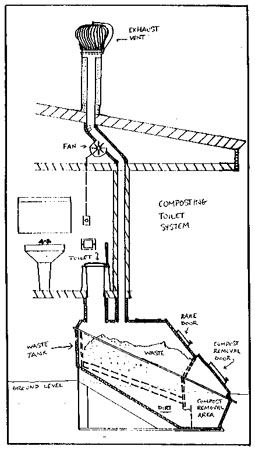
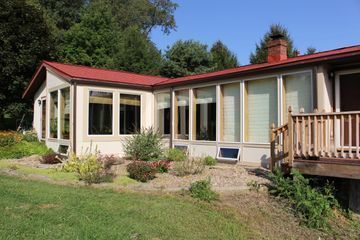

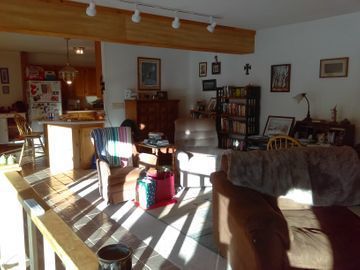
The windows on the south side of the house are used to help heat the house in the winter. During the winter, the sun is low in the sky and the windows allow the sunlight to penetrate fully into the house. As sunlight enters the house, it warms the floor, which absorbs and retains the heat. On a sunny day in January, the house can be heated from 9:30am to 5:30pm without any additional heating, even when the temperature outside is only 20 degrees.

In the spring, as the sun climbs higher in the sky and temperatures become warmer, less and less sun penetrates into the house. By summer time, the sun is so straight up in the sky that it hardly shines in at all, and the house stays cool. To capture the sun's heat in winter, and to keep it out in the summer, we can cover the windows with insulated blinds during appropriate times of the day.
(This photo was taken at 1 pm on May 2; in June the sun will not even reach beyond the windowsills!)
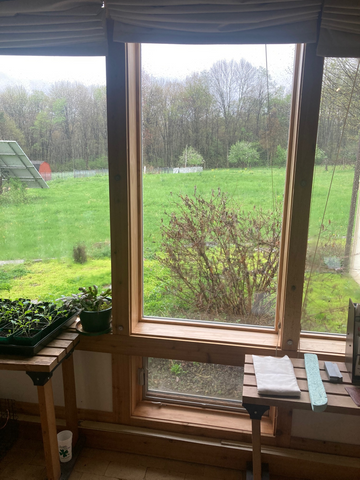
Underneath some of the south-facing windows are cooling doors that act as air conditioners for the house. These doors open to the outside and have screens to keep the bugs out. During the summer, these doors are used after the sun goes down. The cool evening air flows into the house through the doors and the hot air in the house is pushed out the back windows. In the morning, the doors are closed, as are any other windows in the house. The insulation of the straw bale walls keeps the house cool throughout the hot summer days.
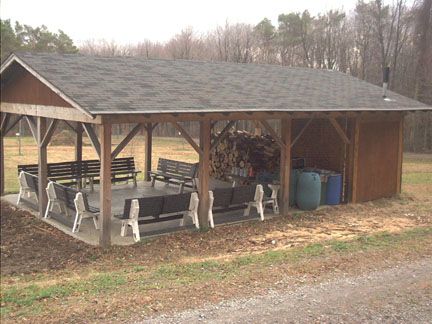
The shelter at Terra Dei Homestead was built through donations from the Butler Garden Club, and serves as a classroom space for visitors. Several interesting ideas were applied to this building. The posts are made from locust trees, and are naturally rot and insect-resistant. The roof, like the one on the house, is reused from an old Lutherlyn cabin. The bathroom features a small composting toilet with non-electric ventilation. Part of the shelter space is used for drying and storing firewood for the masonry heater.

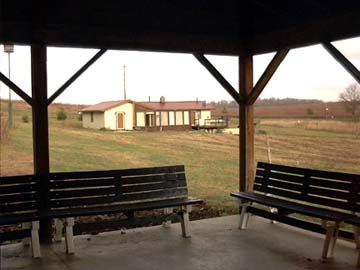
Perhaps the most interesting feature is the seating system. The picnic benches can be easily converted to tables, and are made from 100% recycled plastic. The plastic lumber was produced by BJM Industries of Kittaning, PA, 724-548-2440.
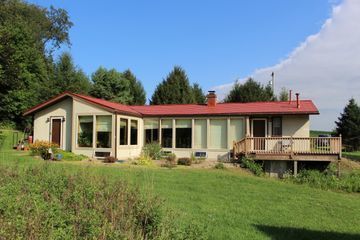
The roof on the house was originally the rooves of two cabins at Lutherlyn. The cabins were taken down to make room for new buildings, but the roofs were still in good condition. They were moved to Terra Dei and placed on a post and beam framework, then joined together in an "L" shape. The shingles on the roof are made from recycled and new steel, and were donated by ATAS International. They are much lighter than asphalt shingles and are designed to increase ventilation inside the roof. They are also much more durable than asphalt, and should last at least 50 years. If they ever do need to be replaced, they can be recycled.

In order to insulate the ceiling to the same level of efficiency as the insulation in the walls, cellulose insulation was used. This was produced from chopped up recycled newspapers and was blown in to the space above the ceiling. The insulation's thickness is about 16 inches. Insulating above the ceiling works to keep the interior of the house at the desired temperature, while ventilation between the insulation and the roof keeps the roof and attic cool.
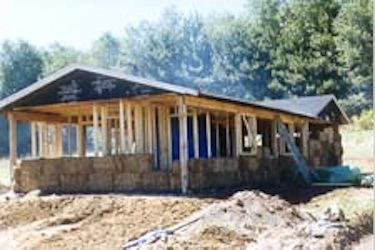
The north, east and west exterior walls of Terra Dei are made of straw bales. Straw bale construction originated in the Sand Hills region of Nebraska in the late 1800s. When people found that they could build houses out of straw, they moved out of their sod homes. Later, when the railroads were built and wood was more available, this type of home construction was forgotten. In more recent years, it has been revived because of its energy efficiency.
Straw was chosen for the walls for several reasons. First, it is a great insulator. The insulation value (r-value) of the walls is 40 (conventional homes are 18). Secondly, straw is a renewable resource, it can be grown easily. Third, much less energy goes into making a straw bale than into the production of fiberglass insulation. Finally, straw bales are very easy to build with, even for people with no experience. The walls at Terra Dei were built by 42 volunteers with no previous experience. The straw bales were stacked in alternating courses (like bricks) under a post and beam frame. The straw bales were eventually sealed with stucco on the exterior and plaster on the interior.

